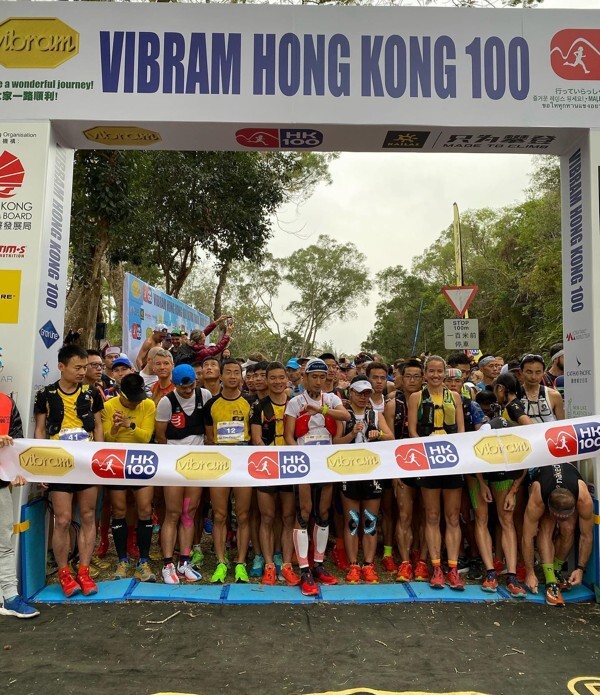
What to do if your knees hurt when trail or ultra running
- Runner’s knee is a common problem and patience is usually the best remedy, either in treatment or training
Pain in your knees when you run is common and can mean many different things. But the solutions are often the same.
So heed advice and make sure you do not make it worse and end up unable to run for months.
What is runner’s knee?
Runner’s knee generically refers to knee pain but it can mean one of many things. If your IT band, the fascia running up the outside your leg, is inflamed it could be pulling on the outside your knee.

Perhaps you have tendinitis, and the tendons in your knee are inflamed. Runner’s knee could be torn cartilage or an ACL, both of which are more serious and require medical attention.
It can mean a host of other things, too. If the pain is acute or does not go away, seek professional advice.
Five easy exercises to avoid knee pain – a video guide
Rest
First things first, rest. Do not run for a few days at least. An inflamed IT band and tendinitis are both overuse injuries. Give them time to recover. In the meantime, do some light stretching and mobility work but not much more.
If the pain persists, see a doctor or physiotherapist to check if it is more serious.

Too much, too soon
The most common mistake for runners, especially beginners, is to do too much running. Once your knee is feeling better, scale back your weekly mileage to stop a repeat of the injury.
There is no need to sign up to a 100km race just because it is all the rage. Tackle some shorter races first and build from there.
How to build your endurance, with ultra runner Lucy Bartholomew
You would not go to a gym and try to dead lift 200kg on your first go. The same applies to running. Bit by bit, build your fitness and the strength you need to sustain long distances.
Seek out advice or a coach if you need to work out what is appropriate for your experience and your goals.
Weight training
Two common causes of knee pain are either your muscles are too weak so there is undue load on your joints, or one leg is stronger than the other so it compensates.
Start adding weight training to your routine to fix both of these issues. Not only will it make you more resistant to injury, but you will also get faster.
Try single leg exercises, such as Romanian dead lifts. Bend forward from the hips, with your weight on one leg. Lift the other leg up so it and your torso are parallel to the ground, then stand upright again.
This will improve your balance, strengthen your hamstrings, glutes and core.
Bulgarian split squats are great, too Stand in a lunge position, but with your back foot raised on a chair or ledge. Then, move up and down by bending your weight-bearing leg. This will increase strength in your quads, hamstrings and glutes.
Try walking lunges, too. You can do all these exercises with different amounts of weights or reps, as you get stronger.
Technique
You might think you know how to run. After all, you’ve been doing it your whole life. But you have probably picked up bad habits.
Hire a coach, or head to a running shop or physiotherapist that has a gait analysis. They can tell you if you are over striding, landing on the outside or inside of your foot, leaning too far forward, running downhill incorrectly or have some other underlying issue.
One easy indicator is the sole of your shoes. Is one side far more worn than the other? It could point to an issue.
The subtly of poor technique adds up over time and causes injuries. It can be fixed with drills or even a change of shoe brand, as some are designed to correct specific issues.
Hong Kong shoe guru on how to pick the best running shoes
Shoes
Speaking of shoes, when was the last time you replaced yours? If you are getting knee pain, it might be because you are running in old, compressed shoes, with worn tread.
A new pair can go a long way to fixing or preventing knee pain.
Barefoot running
There is a tribe of running enthusiasts who swear by barefoot running. Their logic is that we evolved to run bare foot, and if we needed a huge cushion it would be there, rather than having to strap it on via a shoe.
The cushion allows you to run incorrectly, which over time causes injuries.
But be very careful about barefoot running. Even the most ardent disciples warn to scale your programme right back. Given you have been wearing shoes your entire life, you are not ready for more than 100 metres to 200 metres at a time to begin with and build very slowly from there.
If you think barefoot running is for you and will solve your knee issues, read all the material and watch as many YouTube videos as you can, and then start slow.

